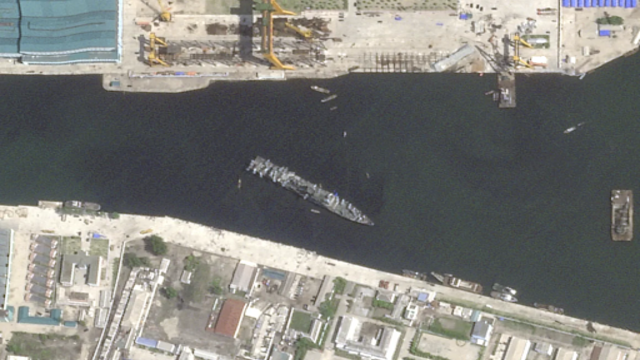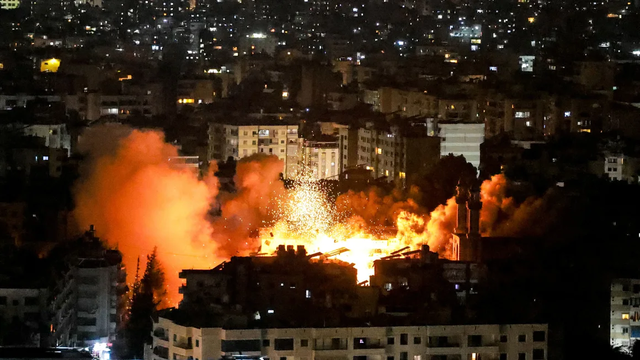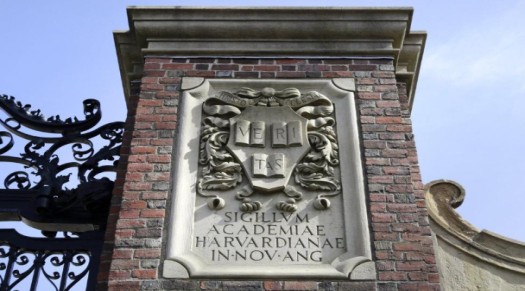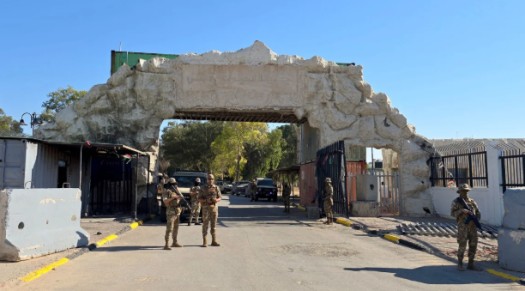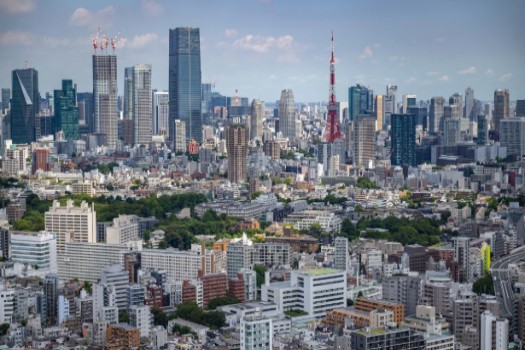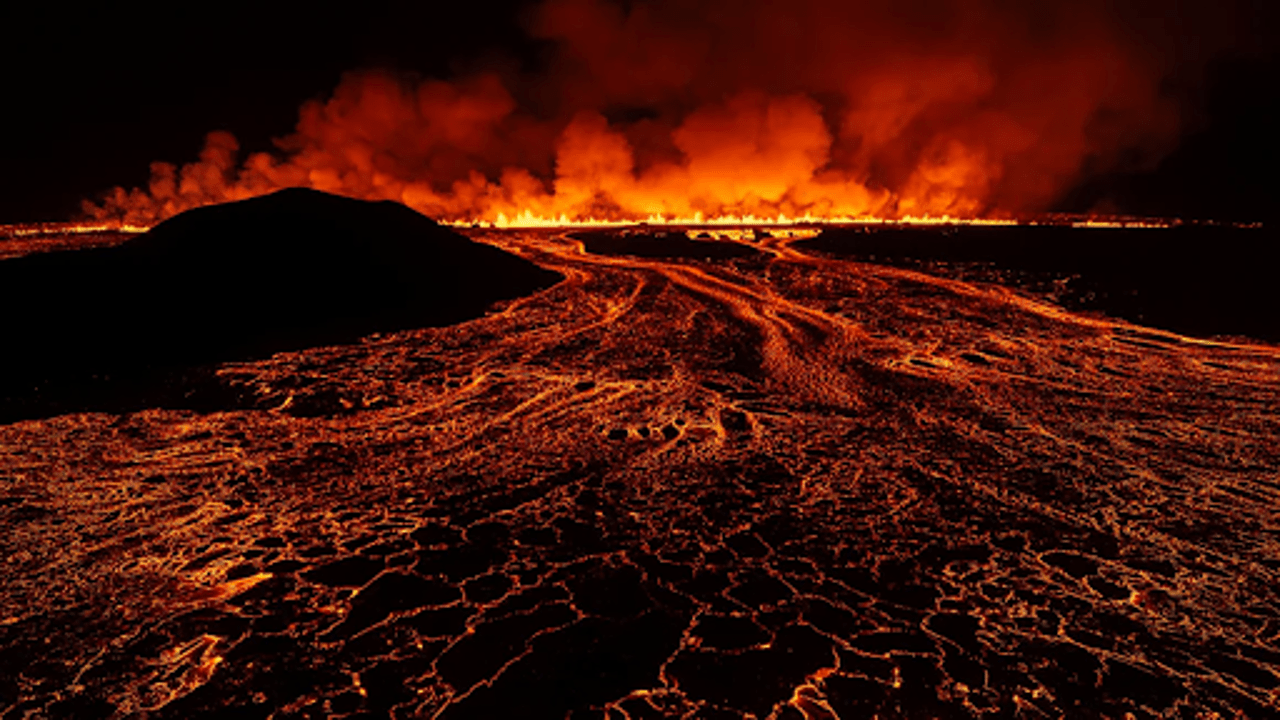
A volcanic eruption began on Iceland's Reykjanes Peninsula on Wednesday, November 20, 2024. AP Photo
A volcano in Iceland's Reykjanes Peninsula erupted late Wednesday night, marking the seventh eruption in the region since December. The fissure, located southwest of Iceland’s capital, measures approximately 3 kilometers (1.9 miles) long, according to the Icelandic Meteorological Office. The eruption, which began shortly after 11 p.m. local time, stabilized within three hours, with no further expansion of the fissure reported.
The eruption occurred in the same location as the last volcanic activity in August, which saw a larger fissure stretching 4 kilometers (2.5 miles). Despite the frequent eruptions in this area, officials confirmed that the town of Grindavík and other surrounding communities were not at risk from the lava flow. Snorri Valsson, a spokesperson for Iceland's Tourist Board, reassured that the eruption was anticipated. "About 60 people in the town, along with guests at two hotels near the Blue Lagoon, have been safely evacuated. The geothermal power plant in Svartsengi has also been temporarily shut down," he stated.
Notably, the world-famous Blue Lagoon spa, a major tourist attraction in the area, was evacuated but had already closed for the day before the eruption began. The spa has faced repeated disruptions due to ongoing volcanic activity over the past year. Lava flows and ash clouds in the region have made it challenging to maintain normal operations. However, officials emphasized that air traffic across Iceland remains unaffected, and the eruption is significantly smaller compared to the one in August.
On Wednesday, November 20, 2024, a volcano erupted on Iceland's Reykjanes Peninsula. AP Photo
Iceland’s Reykjanes Peninsula has become an epicentre of volcanic activity in recent years. Since January 2020, the region has experienced ten eruptions. Scientists attribute this high frequency to the area’s unique geological position. Iceland straddles the boundary between the North American and Eurasian tectonic plates, making it one of the most geologically active locations on Earth. This volcanic hotspot has also been a source of frequent earthquakes, with over 1,000 tremors recorded in just one day last year.
The eruption underscores Iceland's reputation as a land of fire and ice. With a population of around 400,000, the country’s residents are well-versed in preparing for and managing such natural phenomena. The government and tourism industry remain proactive in ensuring safety, while also allowing visitors to witness the awe-inspiring displays of nature.
Despite the potential risks, volcanic activity continues to draw scientists and tourists to Iceland, offering a rare glimpse into the powerful forces shaping the Earth. As the Reykjanes Peninsula experiences its latest eruption, experts are monitoring the situation closely to assess any long-term effects.




